The secret lives of manta rays
The Maldivian atolls offer prime conditions for reef manta rays to thrive; channel openings with coral reef “cleaning stations”, plankton trapping bays that provide a hotspot for manta ray feeding frenzies, and shallow lagoons that act as a safe haven for manta ray pups. It’s no wonder then that the Maldives boasts the largest recorded population of reef manta rays in the world. More than 5000 individuals have been identified and extensively monitored by our Manta Trust researchers from the Maldivian Manta Ray Project (MMRP). Since its conception in 2005, the MMRP has filled in enormous data gaps about these enigmatic fish, and provided insights to both the scientific community and government bodies on how best to protect them. By repeatedly photographing the manta rays unique spot pattern on their bellies and studying their behaviour, we have learnt a huge amount about their population demographics, movements and habitat use.
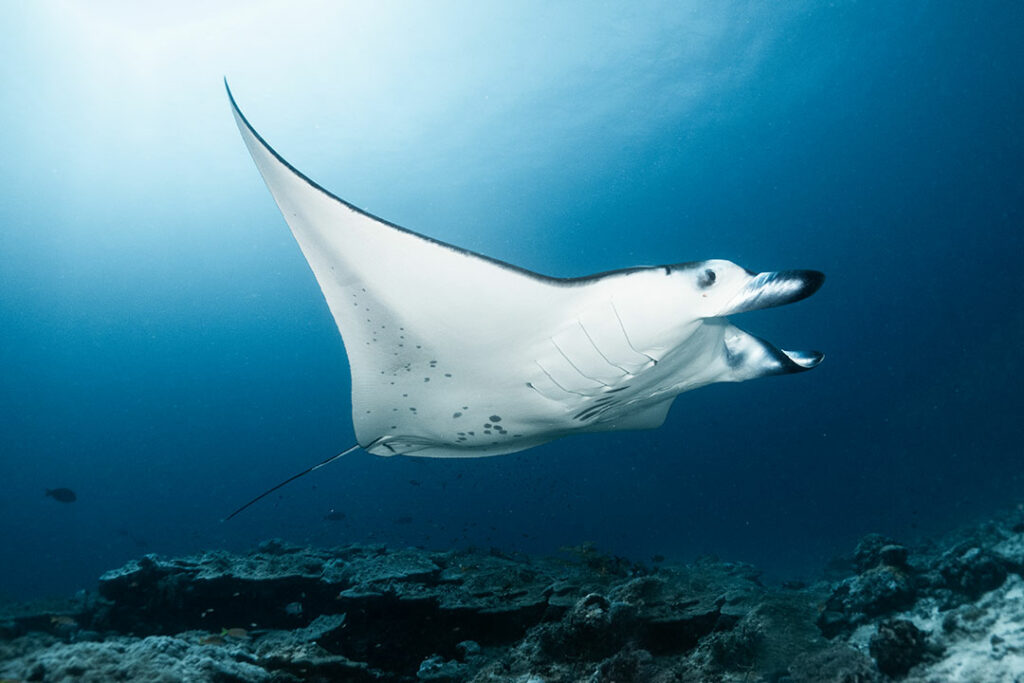
Monster the manta (M2810) above a cleaning station in Laamu atoll. Photo by Jasmine Corbett | © Manta Trust
However, there is still so much we don’t know, and desire to find out, about the Maldivian manta ray population. As marine researchers, we are often limited by the amount of time we can spend underwater with these majestic creatures. Scuba diving offers only a short glimpse into a manta ray’s lifestyle, and varying weather conditions can restrict access to research sites, which can greatly limit consistent data collection. As much as we wish we had gills and could be swimming alongside manta rays all day, this just isn’t feasible yet! To solve this, the deployment of remote underwater cameras has allowed us to run uninterrupted, long-term monitoring of manta aggregation sites for the first time.
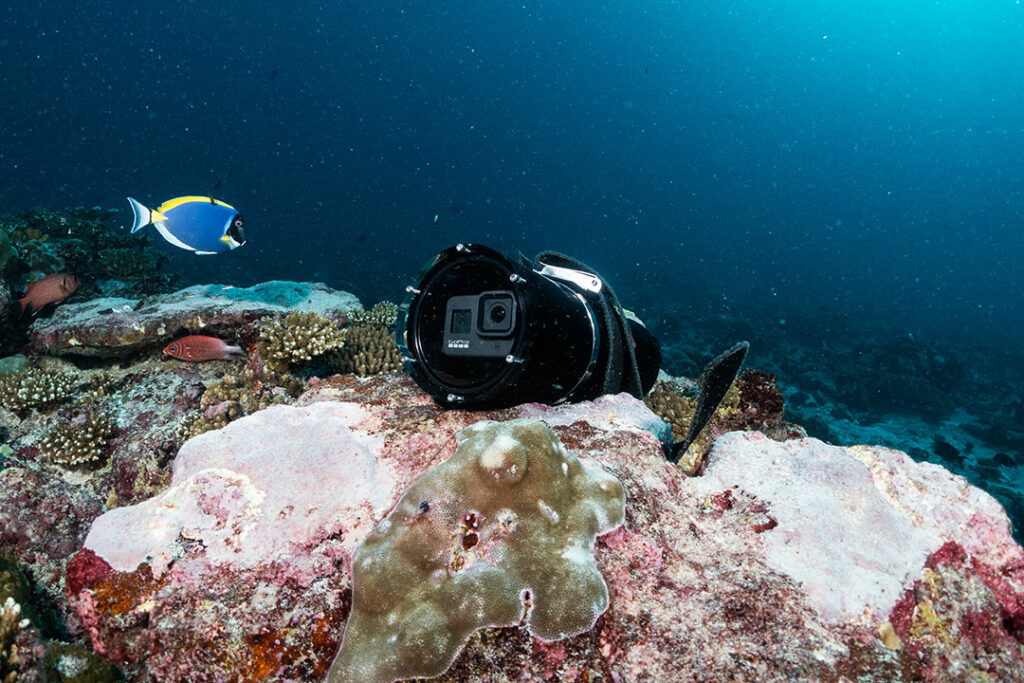
The “Eyes On The Reef” camera system photographing the activity at a cleaning station. Photo by Jasmine Corbett | © Manta Trust
Say hello to our “Eyes On The Reef” (EOTR) systems, which we are deploying at the nearby cleaning stations to our MMRP research bases in Baa, Raa and Laamu atoll. Cleaning stations are large coral patches where marine megafauna gather to get regular hygiene checks by cleaner wrasses that remove parasites from their skin, gills and teeth. The camera systems, which are made up of a GoPro camera and two power banks in a waterproof housing, are placed next to these stations and take photographs every 60 seconds daily, from sunrise until sunset. Not only does this method provide us with a dependable overview of the fluctuations in manta presence throughout the day, but it also allows us to record truly natural manta behaviour and interactions without any human disturbance. By comparing this data with environmental variables such as lunar cycles, tides and currents, we are starting to form a better understanding of what conditions determine the presence or absence of manta rays at cleaning stations.
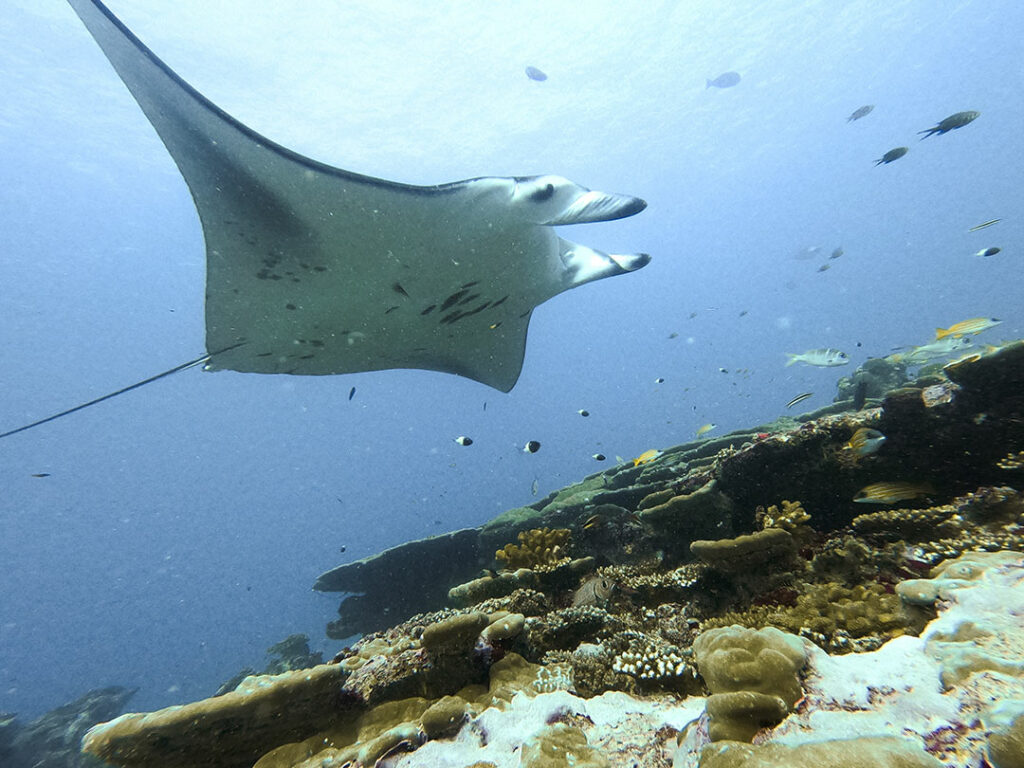
Lizzie the manta (M2845) photographed on the remote camera at a cleaning station in Laamu atoll. Photo © Manta Trust.
One of the best parts of this project is the pure anticipation of discovering what has been recorded on the memory card over the last 7 days. You can never predict what creatures will have passed by those cameras and what encounters will have been documented. Aside from cleaning manta rays, our cameras are often graced with the presence of turtles, sharks, eagle rays and napoleon wrasse stopping by to receive a spa treatment. After long feeding events, manta rays tend to have a build-up of detritus on their bodies, which results in long visits to the cleaning stations. Our cameras have enabled us to record cleaning events of over 2.5 hours, which we researchers would not be able to record manually, due to the limitations of an average of 1-hour scuba dive times.
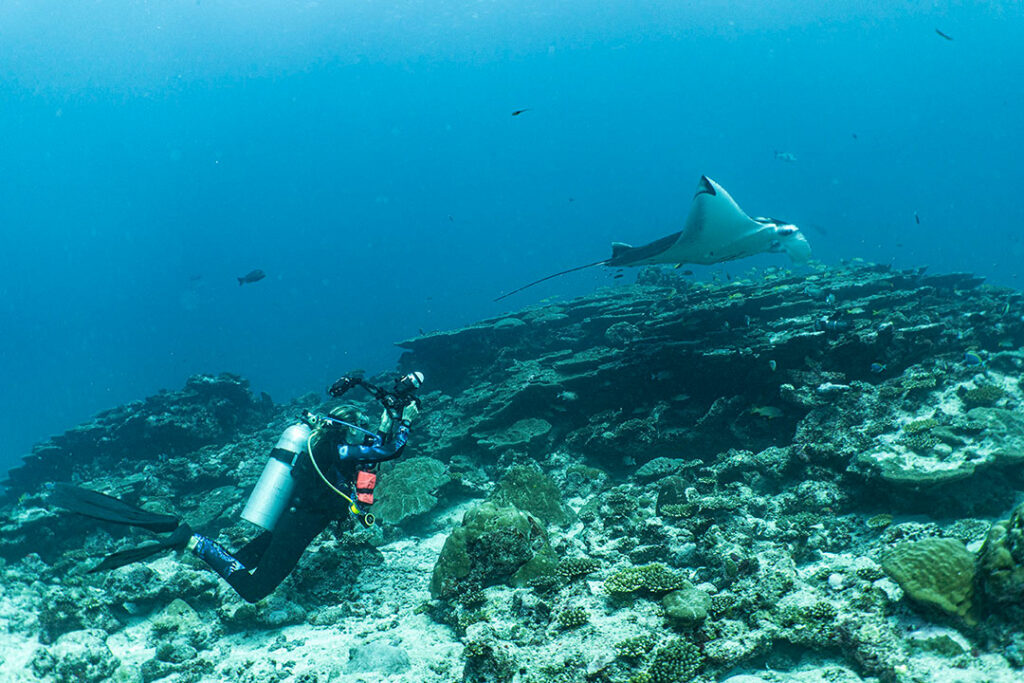
Laamu atoll project manager Jasmine Corbett taking an identification photograph of a manta ray above a cleaning station. Photo by Ron Nicolayson | © Manta Trust
By gaining an understanding of the temporal use of cleaning stations by mantas, this information will help us contribute crucial information to marine ecosystem management plans across the atolls, advise seasonal restrictions of activities that take place at the manta aggregation sites, and monitor designated marine protected areas. Manta ray tourism is a huge contributor to the local economy in the Maldives, so by providing an insight into manta ray lifestyles and habitat use, and ensuring that these habitats remain protected and respected through responsible tourism practices, we hope for a future where both manta rays and their habitats, and the local economy, can thrive.
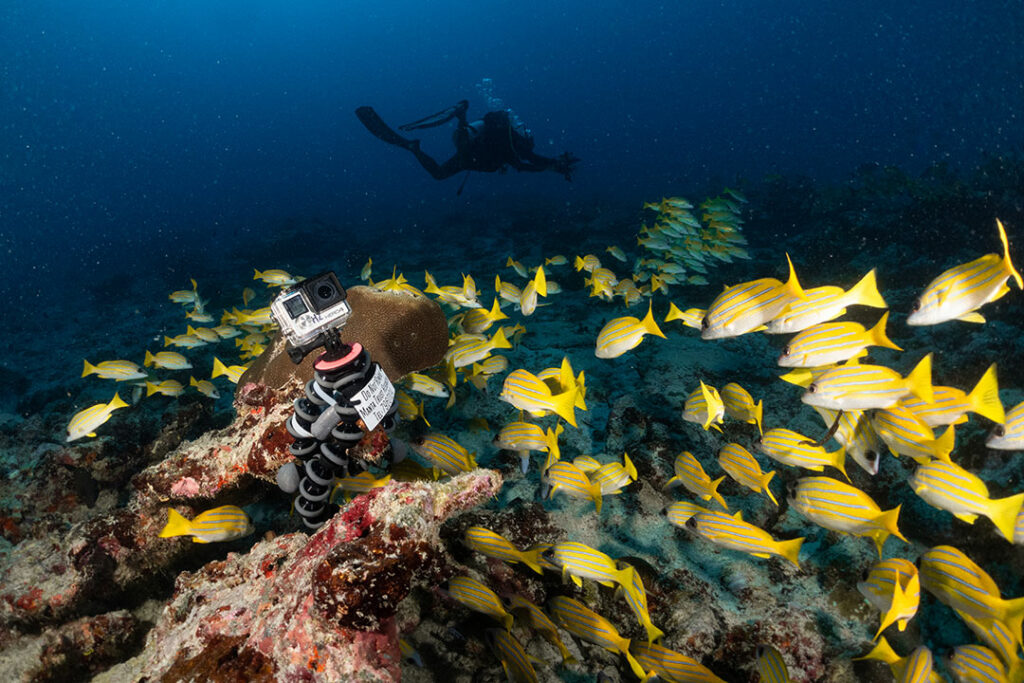
A remote underwater video camera, used to record the cleaning stations during dive surface intervals. Photo by Jasmine Corbett | © Manta trust
